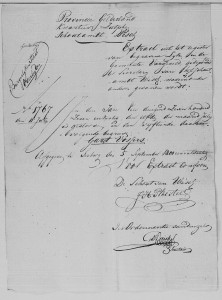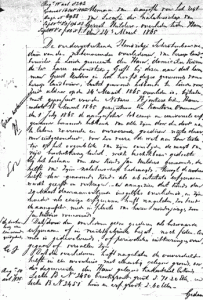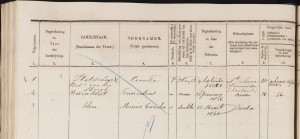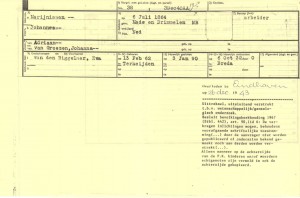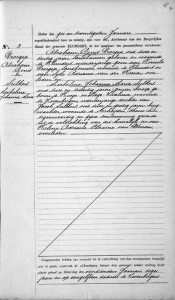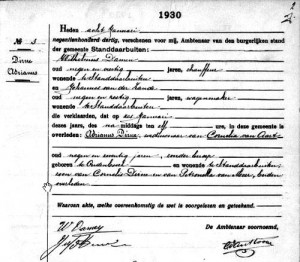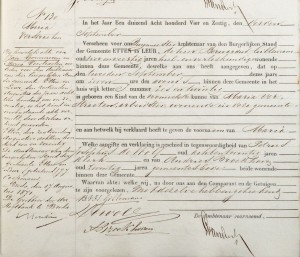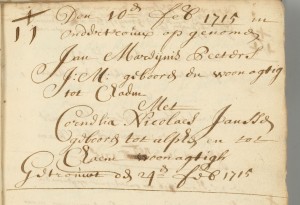Since the introduction of the civil registration in 1811, a bride and groom had to submit several documents to prove they were eligible to get married. Not only do these records tell you when your ancestors were born, but they may also provide information about their physical appearance, death dates of parents and previous spouses or even of their grandparents. These documents are known as the 'Huwelijksbijlagen' and most of them still exist and can be found online. … [Read more...]
Death duties files
To be able to collect tax on estates of deceased people, the family of the deceased was required to file a death duties file within 6 months of the death. These death duties files can be very interesting sources to get an overview of the property of our ancestors. … [Read more...]
Population registers
Population registers can be a great source of information because they list all the inhabitants of a house, usually one or more families together with their domestic staff. Since 1850, the Dutch population registers form a continuous registration where you can find who lived where at all times. They look like census records but differ in one important aspect: population registers were kept up-to-date during the period the register covers (usually ten years). If you think of the census record as … [Read more...]
Personal record card
Personal record cards were used from 1938 to keep track of who lived where. They are part of the population registration. Personal record cards are a great source of information for recent research because they cover the period from 1938 onward. Copies of personal record cards of deceased people can be ordered for a fee from the Central Bureau for genealogy. … [Read more...]
Marriage record
Marriage records are a part of the civil registration, introduced in 1811 or slightly earlier in Limburg and Zeeuws-Vlaanderen. Marriage records contain the following information: Name, age, profession and place of birth and residence of the bride and groom Names of their parents, and if they are still alive their professions and place of residence If any: names of previous spouses (either divorced or deceased) Name, age, profession and place of residence for 4 witnesses … [Read more...]
Death record
Death records are a part of the civil registration. A death record lists the following data:Place, date and time of death Names of parents Names of spouses Name, profession and age of the one registering the birth Names, profession and age of the witnesses Often: address where the death took place … [Read more...]
Using birth records (geboorteaktes) to find your Dutch ancestors
Birth records (Dutch: geboorteakte) are a part of the civil registration and were kept since 1811 (or slightly earlier for some parts of the Netherlands). A birth record lists the following data: Place, date and time of birth Names of parents Name, profession and age of the one registering the birth (often the father) Names, profession and age of the witnesses Often: address where the birth took place … [Read more...]
Civil registration
For the nineteenth and twentieth century, the civil registration is the primary genealogical resource. All the births, marriages and deaths (BMD) were recorded. Usually, only using the civil registration you can compile a 'backbone' of a pedigree that goes back to the late 1700's. … [Read more...]
Church records
For the seventeenth and eighteenth century, church records provide the most complete records for genealogical research. The church recorded the baptisms, marriages and burials of their members. Many of those records have survived to this day. … [Read more...]
